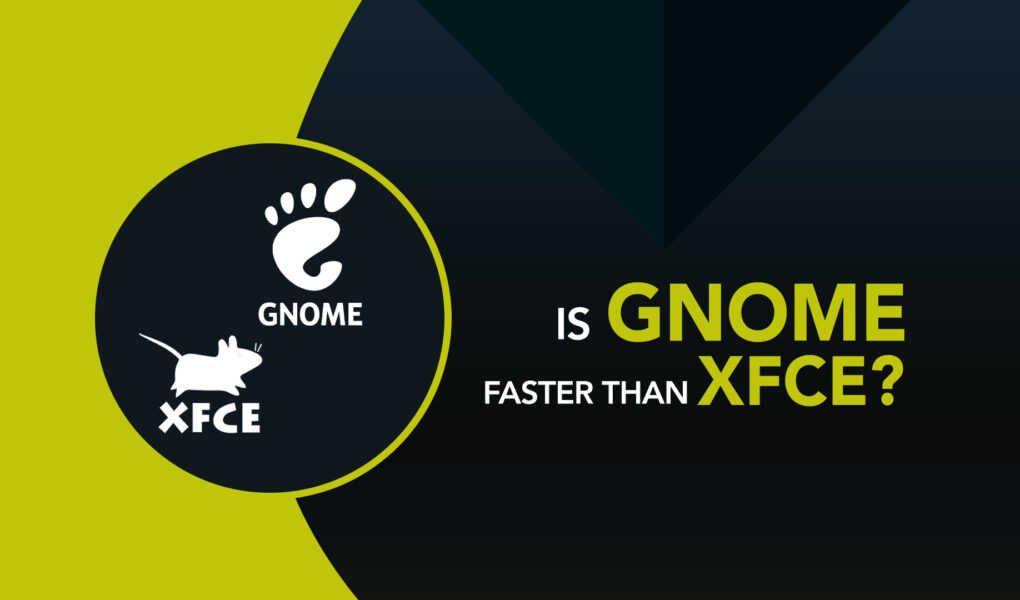Putting aside all other metrics but only the performance can become an integral factor to consider the desktop environment. From all others, the options often come down to two, GNOME and XFCE. Now which one is faster among them? Curious to know? Let’s find out.
About GNOME
GNOME is a widely used desktop environment for Linux, recognized for its contemporary design and robust functionalities. However, its performance has been a subject of debate among users, with some claiming that it is slow and resource-intensive.
GNOME performance
To evaluate the performance of GNOME, we will consider several factors, including its system requirements and hardware compatibility, its architecture, and its resource-intensive features.
System requirements: GNOME recommends a minimum of 2 GB of RAM and a modern processor for optimum performance. However, it can run on less powerful hardware, albeit with reduced performance. It is essential to note that GNOME is a resource-intensive desktop environment, and users with older or less powerful hardware may experience slow performance.
Architecture: In terms of architecture, GNOME is designed with modern hardware in mind and uses a compositing window manager that provides smooth animations and graphical effects. However, these effects can consume significant system resources and affect performance negatively.
Resource Usage: GNOME’s resource-intensive features include its powerful search function, which indexes files and applications in real time, and its customizable interface, which allows users to add extensions and customize their desktop environment extensively. Although these functionalities improve the usability for the user, they also utilize system resources, leading to a detrimental impact on performance.
About XFCE
XFCE is a lightweight desktop environment that prioritizes speed and efficiency over flashy animations and effects. Its simplistic interface and efficient resource utilization are well-known attributes, rendering it a suitable option for individuals with older or less capable hardware.
XFCE performance
To determine the performance of XFCE, we will consider the same factors we have evaluated for GNOME so we have a fair comparison.
System requirements: XFCE requires a minimum of 512 MB of RAM and a modern processor. It can run on even less powerful hardware, making it an excellent choice for users with older or less powerful machines. XFCE’s minimalistic interface and low resource usage contribute significantly to its speed and efficiency.
Architecture: XFCE is engineered to be lightweight and resource-efficient with regard to its architecture. It uses a traditional window manager that focuses on functionality rather than flashy animations and effects. By adopting this design approach, resource utilization is minimized, leading to enhanced performance.
Resource Usage: XFCE’s resource usage is also minimal, with low memory and CPU usage compared to other desktop environments. The efficiency of XFCE stems from its simple and uncomplicated design that prioritizes functionality above aesthetics.
Overall Performance Comparison and which one is faster?
Regarding overall performance, each desktop environment has its advantages and disadvantages. GNOME offers a more modern and user-friendly interface, with more features and customization options. Nevertheless, this advantage results in higher resource consumption, leading to reduced performance on older systems.
XFCE, on the other hand, is more lightweight and offers faster performance, but it lacks some of the features and customization options of GNOME. XFCE is an ideal choice for older systems or systems with limited resources, while GNOME is better suited for modern systems with higher-end hardware.
Upon reviewing the details, it is evident that while the discrepancy may not be significant, Xfce maintains a superior level of performance.
Conclusion
GNOME and XFCE exhibit their own set of advantages and disadvantages concerning their performance. If you have a modern system with higher-end hardware, GNOME is a good choice as it offers a more modern interface and more features. However, if you have an older system or a system with limited resources, XFCE is the better choice as it offers faster performance and lower resource usage.
Nevertheless, when choosing between GNOME and XFCE, it is essential to consider the hardware on which they will be running, the desired user experience, and the trade-offs between features and performance.


